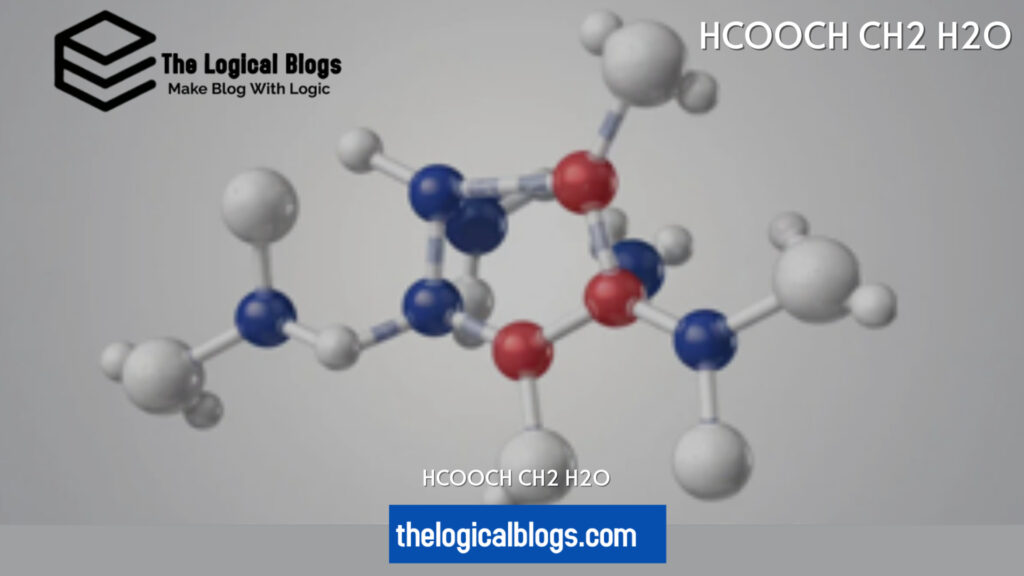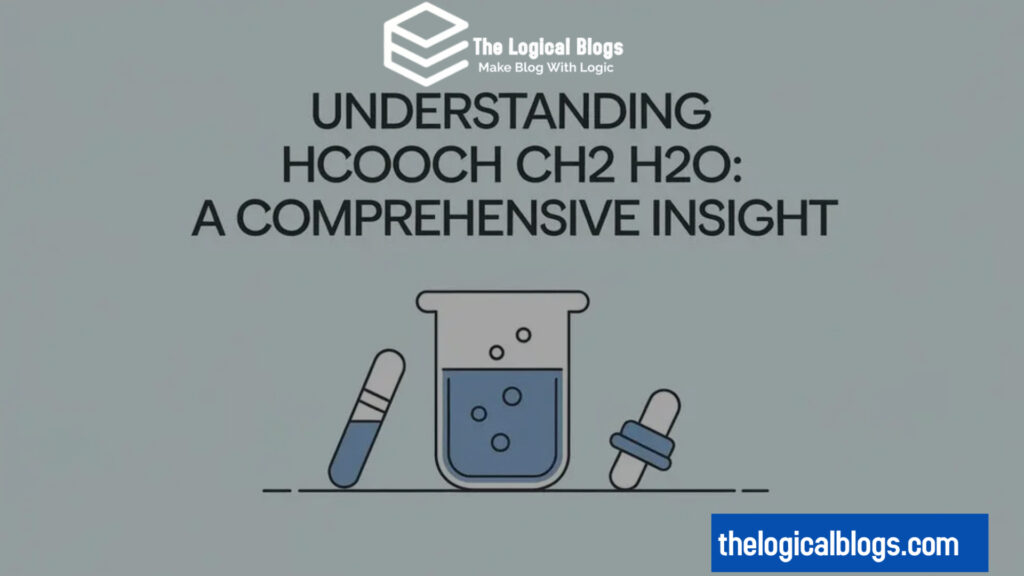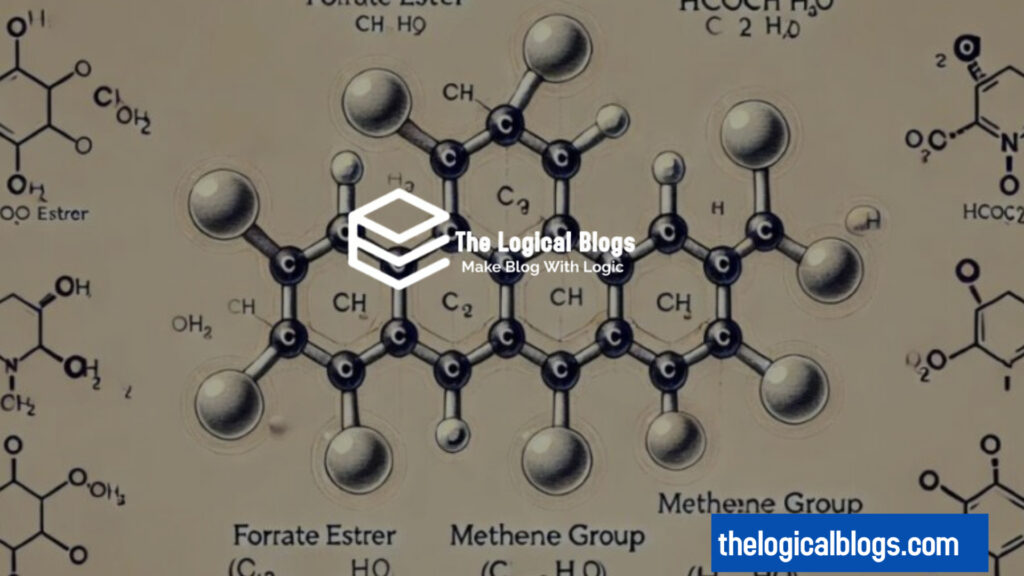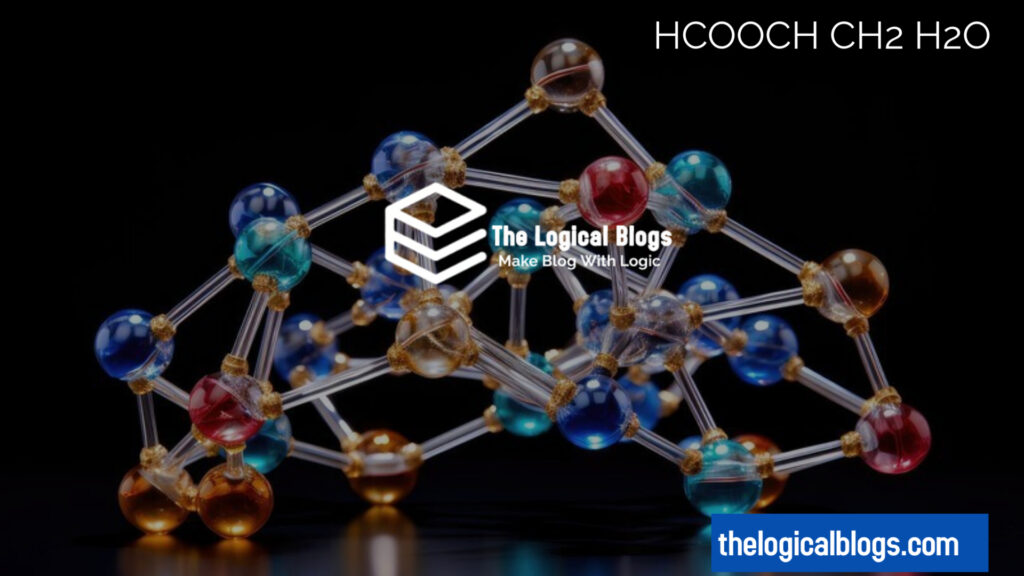
Table of Contents
Introduction
In chemistry, the choice of solvent is pivotal to the success of replies and procedures. HCOOCH CH2 H2O, a complex that includes formic acid ester, methylene group, and water, is developing as a promising alternative to old-style solvents. This article presents a comparative analysis of HCOOCH CH2 H2O and predictable solvents, focusing on their properties, applications, and eco-friendly impact. This report outlines the advantages of implementing Formic Acid Ester
in lab and industrial environments by examining their properties, solubility, and effectiveness in different chemical processes.
Understanding HCOOCH CH2 H2O
Chemical Structure and Properties
Formic Acid Ester consists of three primary components:
- Formic Acid Ester (HCOOCH): This group endows the compound with significant reactivity, particularly in esterification and hydrolysis reactions.
- Methylene Group (CH₂): This treatment increases the sensitivity of the molecule and hence its participation in a wide range of chemical reactions.
- Water Molecule (H₂O): The entrance of water is beneficial in solubility and promotes the compound’s tendency to respond to drastic cold with ease.

Physical Properties
- Appearance: HCOOCH CH2 H2O can exist as a liquid or in a hydrated crystalline form.
- Solubility: It readily dissolves in polar solvents like water and alcohol, facilitating its use in various reactions.
- Boiling and Melting Points: These properties are influenced by the molecular structure and hydration state.
Chemical Properties
- Reactivity: The ester group can be quickly reacted with nucleophiles. This allows for a range of chemical reactions.
- Stability: The compound is sensitive to environmental conditions such as temperature and pH.
Traditional Solvents Overview
Common Traditional Solvents
Traditional solvents such as acetic acid and ethyl alcohol have long been employed for chemical reactions. Although effective, they come with disadvantages, like environmental and toxic effects.Properties of Traditional Solvents.
- Toxicity: Many traditional solvents harm human health and the environment.
- Volatility: High volatility can lead to significant losses during reactions and pose safety risks.
Comparative Analysis: HCOOCH CH2 H2O vs. Traditional Solvents
Reactivity Comparison
CH2 H2O HCOOCH shows greater reactivity than other solvents. The ability of Formic Acid Ester to actively participate in the process of esterification and hydrolysis makes it a versatile ingredient in organic chemical synthesis. Nonetheless, the hypovalent solvents cannot crack down in these reactions, the same way the conventional ones due to their lower reactivity to lithium and lithium superoxide.
Environmental Impact
The effects of the choice of solvents on the environment are becoming crucial.
- HCOOCH CH2 H2O: This compound is biodegradable and poses lower toxicity risks than traditional solvents. Its use can significantly reduce pollution associated with chemical processes.
- Traditional Solvents: Many are persistent pollutants contributing to environmental degradation.
Application Versatility
HCOOCH CH2 H2O has a wide range of applications across various industries:
- Organic Synthesis: It is used extensively for esterification reactions and hydrolysis processes.
- Environmental Chemistry: The substance assists in breaking down the pollutants by hydrolysis.
Conversely, while traditional solvents are helpful, safety concerns and regulatory restrictions often limit their applications.

Case Study: Pharmaceutical Applications
One notable case study shows the application of Formic Acid Ester in the area of pharmaceutical synthesis. Scientists have proved that this substance can increase the effectiveness of the reaction for the creation of active pharmaceutical ingredients. Herein lies the advantage of a simple liquid that not only dissolves but also contributes to a chemical reaction it promotes, thus enabling complex reactions to occur that are hard to accomplish with ordinary solvents.
Outcomes
Moving to new solvents could require additional training. However, the improved safety profile of this new solvent makes this change worth it.
Counterarguments and Refutations
Although some believe switching to new solvents like CH2 H2O from HCOOCH could require more research or time to adapt, the advantages far exceed the concerns.
- Cost Considerations: Although initial costs may be higher for new solvent implementation, long-term savings from reduced waste disposal fees and improved reaction efficiencies can offset these expenses.
- Familiarity with Traditional Solvents: Moving to new solvents could require additional training. However, the improved safety profile of this new solvent makes this change worth it.
Also Read: Exposing the Untold Struggles of Wegild Game Development 2025
Conclusion
Comparative analysis of HCOOCH CH2 H2O versus traditional solvents has revealed significant benefits when using this chemical in lab or industrial settings. The superior reactivity, lower environmental impact, and versatility make it a great candidate for replacing more toxic traditional solvents. As industries continue to prioritize sustainability and safety, the role of compounds like Formic Acid Ester will likely expand, paving the way for greener chemistry practices.

References
- Tech Business Insider. (2025). HCOOCH CH2 H2O: Structure, Uses, and Green Chemistry. Retrieved from https://techbusinesinsider.com/hcooch-ch2-h2o/
- Vents Magazine. (2025). Understanding HCOOCH CH2 H2O: An Insight into Its Structure and Applications. Retrieved from https://ventsmagazine.co.uk/hcooch-ch2-h2o/
- Buzz Press. (2025). HCOOCH CH2 H2O Explained: Structure, Function, and Usage. Retrieved from https://buzzpress.co.uk/hcooch-ch2-h2o/
- Incredible Magazines. (2025). HCOOCH CH2 H2O: Key Insights on Chemical Properties. Retrieved from https://incrediblemagazines.com/hcooch-ch2-h2o/
- Research Journal of Chemistry & Environment. (2025). Innovative Applications of Green Chemistry: The Role of New Solvents.
FAQ for “Comparative Analysis of HCOOCH CH2 H2O and Traditional Solvents”
1. What is HCOOCH CH2 H2O?
HCOOCH CH2 H2O is a compound consisting of formic acid ester, a methylene group, and water. It is recognized for its reactivity and potential applications in various chemical processes.
2. How does HCOOCH CH2 H2O compare to traditional solvents?
HCOOCH CH2 H2O offers superior reactivity, lower toxicity, and better environmental sustainability than many traditional solvents, which often pose health and ecological risks.
3. What are the main applications of HCOOCH CH2 H2O?
This compound is widely used in organic synthesis, particularly in esterification and hydrolysis reactions, and in environmental chemistry for breaking down pollutants.
4. Are there any drawbacks to using HCOOCH CH2 H2O?
Though it could require beginning investment and some training to achieve efficient implementation, the end positives, including less waste and improved security, far outweigh any issues.
5. Can HCOOCH CH2 H2O be used in pharmaceutical applications?
Indeed, research has shown that HCOOCH CH2 H2O could increase the effectiveness of the synthesis of active pharmaceutical components (APIs), making it an effective solvent for the pharmaceutical industry.
6. Is HCOOCH CH2 H2O environmentally friendly?
HCOOCH CH2 H2O can be bio-degradable and has less toxicity risk than conventional solvents, which makes it an environmentally friendly option for chemicals.
FOR MORE EXCITING BLOGS PLEASE VISIT THE WEBSITE: thelogicalblogs.com







Solid article! Thinking about bankroll management & adapting to different game types is key. Seeing platforms like philwin online casino cater to local payment methods is smart – accessibility matters a lot for consistent play! 👍